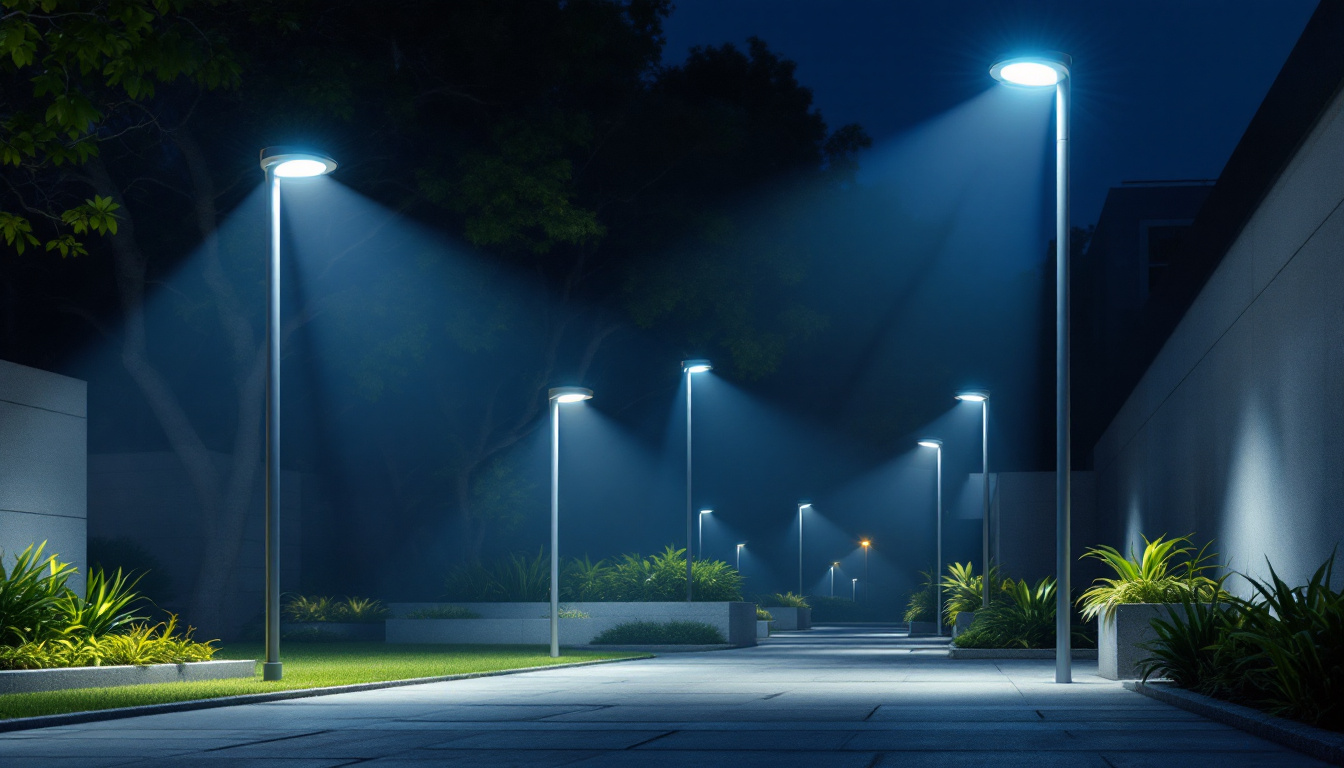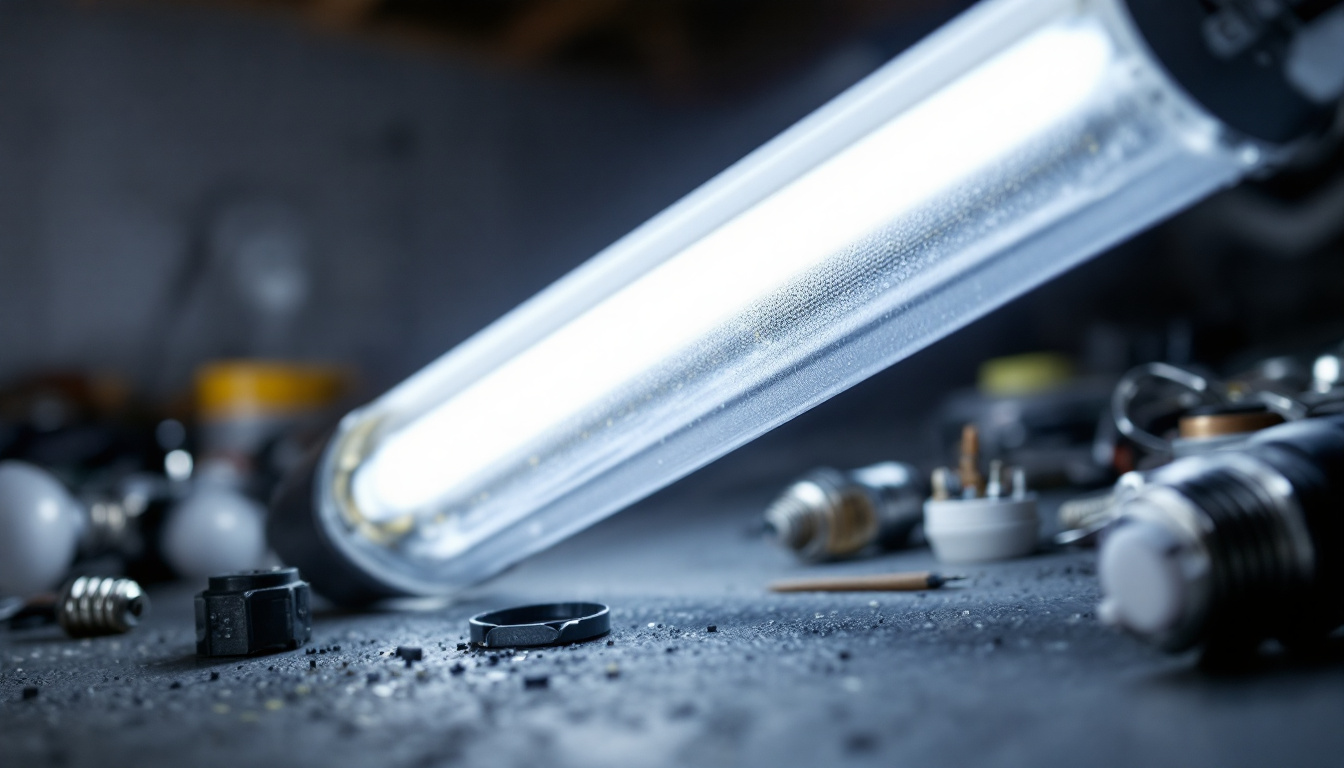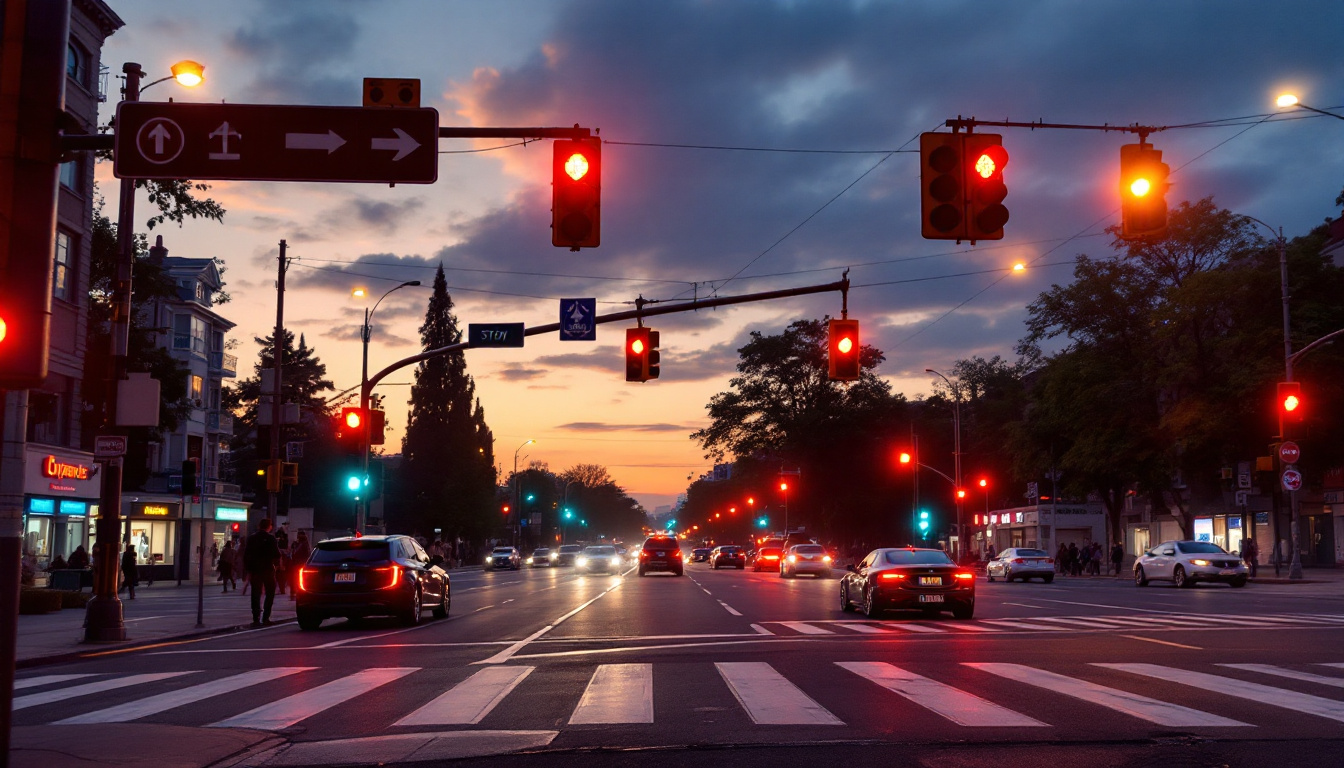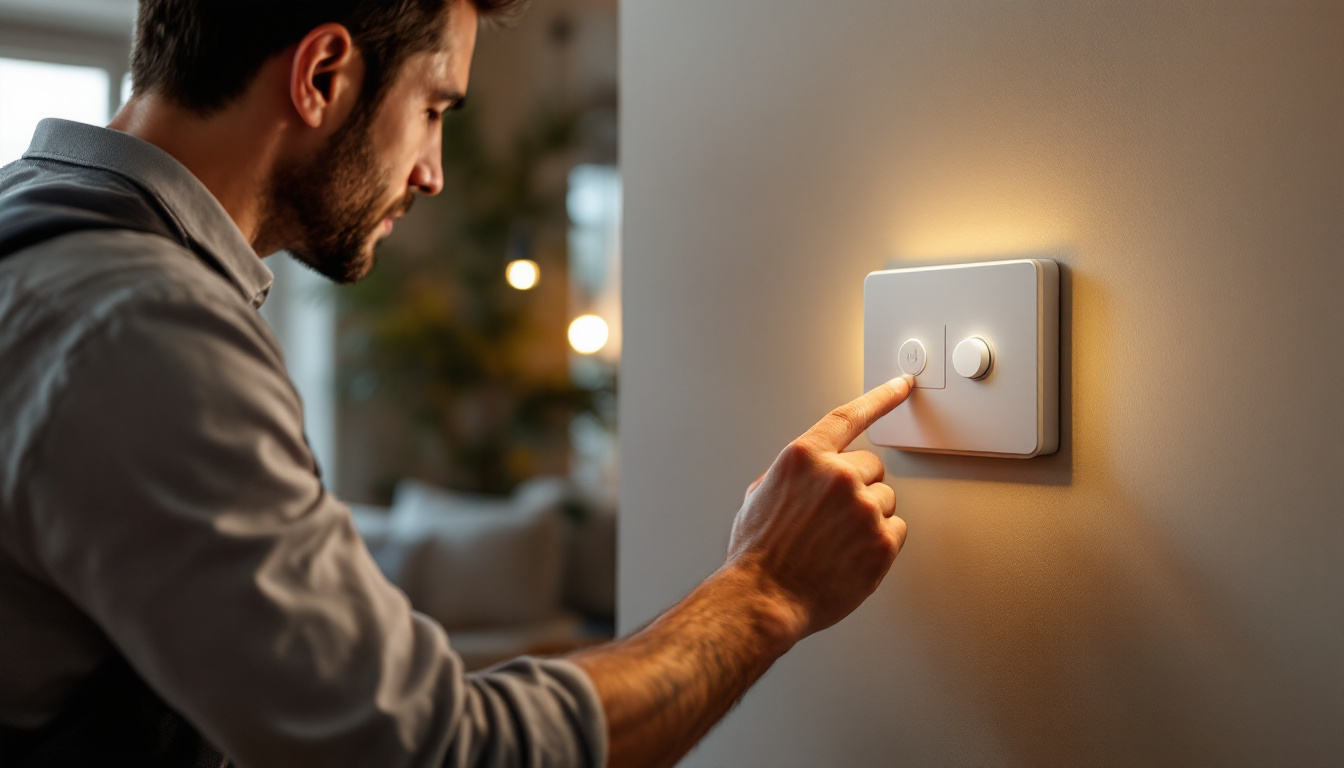
In the world of lighting design, particularly for outdoor spaces, LED area lights have emerged as a popular choice due to their energy efficiency and longevity. However, the implementation of these lights can be fraught with challenges. Lighting contractors need to be aware of common pitfalls that can lead to costly mistakes. This article aims to provide insights into how to effectively plan and execute lighting projects, ensuring that the installation of LED area lights is both efficient and effective.
“`html
Before embarking on any lighting project, it is crucial to clearly define the goals. Are you illuminating a parking lot, enhancing security, or creating an inviting atmosphere for a public park? Each of these objectives requires a different approach to lighting design.
Understanding the purpose of the lighting will guide decisions regarding the type of fixtures, their placement, and the overall layout. For instance, if the goal is to improve safety and visibility in a parking lot, the lighting needs to be bright enough to eliminate dark spots while also being glare-free for drivers. Moreover, considering the aesthetic aspect can also play a significant role; for example, using warm-toned lights can create a welcoming environment, while cooler tones might be more suitable for a modern, sleek design.
A thorough site assessment is essential to avoid oversights that could lead to inefficient lighting solutions. Factors such as existing infrastructure, surrounding environment, and potential obstructions should be evaluated. This assessment helps in determining the optimal placement of LED area lights to maximize their effectiveness.
Additionally, understanding the local climate and weather patterns can influence the choice of fixtures. For example, areas prone to high winds may require sturdier mounts, while locations with heavy snowfall might necessitate lights that can withstand the weight of accumulated snow. Furthermore, it is beneficial to consider the surrounding wildlife and natural habitats; certain lighting designs can minimize disruption to nocturnal animals, thereby promoting a balanced coexistence between urban development and nature.
Budgeting is a critical aspect of any lighting project. While LED lights tend to have a higher upfront cost compared to traditional lighting options, their long-term energy savings and lower maintenance costs often make them the more economical choice. However, it is essential to account for all associated costs, including installation, maintenance, and potential upgrades to existing electrical systems.
Contractors should also consider the lifecycle of the lighting fixtures. Investing in high-quality LED area lights may seem expensive initially, but the longevity and efficiency can result in significant savings over time. Additionally, exploring available rebates or incentives for energy-efficient lighting can further alleviate initial costs. Engaging with local utility companies may reveal programs designed to support sustainable projects, which can be a valuable resource for budget-conscious planners.
“`
When selecting LED area lights, understanding the relationship between lumens and watts is vital. Lumens measure the amount of light emitted by a fixture, while watts indicate the amount of energy consumed. A common mistake is to focus solely on wattage, which can lead to underestimating the necessary brightness for the project.
For instance, a high-wattage LED fixture does not always equate to high luminosity. It is essential to consult product specifications and select fixtures that provide the required lumens for the intended application. Additionally, it’s worth noting that advancements in LED technology have led to more efficient fixtures that produce more lumens per watt. This means that you can achieve the same level of brightness with lower wattage, resulting in energy savings and reduced electricity bills over time. Therefore, when comparing fixtures, always look for the lumens per watt ratio to ensure optimal performance and efficiency.
The color temperature of LED lights can significantly affect the ambiance of a space. Measured in Kelvin (K), color temperatures can range from warm (around 2700K) to cool (up to 6500K). Selecting the appropriate color temperature is crucial for achieving the desired atmosphere.
For example, warmer temperatures are often preferred in residential areas to create a cozy environment, while cooler temperatures may be more suitable for commercial spaces where visibility is paramount. Understanding the psychological effects of different color temperatures can aid in making informed choices. Moreover, it’s beneficial to consider the specific activities that will take place in the illuminated area. For instance, task-oriented spaces like kitchens or workshops may benefit from cooler, brighter light to enhance focus and visibility, while relaxation areas like living rooms or bedrooms might be better suited to softer, warmer tones that promote comfort and tranquility.
Durability is another critical factor when selecting LED area lights, especially for outdoor applications. Fixtures must be rated for weather resistance and should be able to withstand environmental factors such as rain, snow, and extreme temperatures.
Look for fixtures with a high Ingress Protection (IP) rating, which indicates their resistance to dust and moisture. Additionally, consider the materials used in the construction of the fixtures; aluminum and polycarbonate are often preferred for their durability and lightweight properties. Furthermore, it is essential to assess the warranty and lifespan of the fixtures. Many quality LED lights come with warranties ranging from 5 to 10 years, reflecting the manufacturer’s confidence in their product’s longevity. Investing in durable fixtures not only ensures consistent performance but also reduces the frequency of replacements, ultimately saving time and money in the long run. Regular maintenance checks can also extend the life of your fixtures, ensuring they continue to operate efficiently and effectively in various conditions.
Adhering to manufacturer guidelines during installation is essential to ensure the longevity and performance of LED area lights. These guidelines provide critical information on mounting heights, spacing between fixtures, and wiring requirements.
Deviating from these specifications can lead to issues such as inadequate lighting, increased energy consumption, and even safety hazards. It is advisable to conduct a thorough review of the installation manual before commencing work.
Electrical connections are a common source of problems in lighting installations. Ensuring that connections are secure and properly insulated can prevent issues such as flickering lights or complete fixture failure. It is recommended to use high-quality connectors and to double-check all wiring before powering up the system.
Additionally, consider the use of surge protectors to safeguard against power surges, which can damage LED fixtures and shorten their lifespan. Proper grounding of fixtures is also essential for safety and performance.
Once the installation is complete, conducting thorough testing is crucial. This step ensures that all fixtures are functioning as intended and that the lighting meets the project goals. Check for uniformity in lighting levels, ensuring there are no dark spots or overly bright areas.
Testing should also include verifying that the fixtures are securely mounted and that electrical connections are stable. Any issues identified during testing should be addressed immediately to avoid future complications.
Regular maintenance is vital to the longevity and efficiency of LED area lights. Establishing a maintenance schedule can help identify potential issues before they escalate into costly repairs. This schedule should include routine inspections, cleaning of fixtures, and checking electrical connections.
Cleaning is particularly important, as dirt and debris can accumulate on fixtures, reducing their effectiveness. Depending on the environment, cleaning may need to be conducted quarterly or biannually to ensure optimal performance.
Monitoring the performance of LED area lights is essential for identifying any changes in brightness or functionality. This can be done through regular visual inspections or by utilizing smart lighting systems that provide real-time data on energy consumption and performance metrics.
By keeping an eye on performance, contractors can proactively address any issues, ensuring that the lighting continues to meet the needs of the space and its users.
As technology continues to evolve, upgrading existing lighting systems may become necessary to take advantage of new advancements in efficiency and functionality. LED technology is constantly improving, with newer models offering enhanced brightness, better color rendering, and even smart features such as dimming and motion sensing.
Staying informed about the latest developments in LED technology can help contractors make informed decisions about when to upgrade fixtures. This proactive approach not only improves lighting quality but can also lead to further energy savings.
One of the most significant mistakes contractors can make is failing to consider local regulations and codes related to outdoor lighting. Many municipalities have specific guidelines regarding light pollution, fixture types, and brightness levels to minimize the impact on surrounding areas.
Before starting a project, it is essential to research and understand these regulations to avoid potential fines and the need for costly adjustments after installation. Engaging with local authorities early in the planning process can help ensure compliance.
Ignoring user feedback can lead to dissatisfaction with the lighting project. Engaging with end-users during the planning and post-installation phases can provide valuable insights into their needs and preferences.
Conducting surveys or focus groups can help gather feedback on lighting effectiveness and user experience. This information can be instrumental in making adjustments or planning future projects.
Lastly, failing to consider future needs can result in a lighting system that quickly becomes outdated or insufficient. As spaces evolve, so do their lighting requirements. Planning for scalability and flexibility in the lighting design can save time and money in the long run.
Incorporating features such as adjustable mounting systems or modular fixtures can allow for easy upgrades or changes as the needs of the space change over time.
LED area lights offer numerous benefits for outdoor lighting projects, but careful planning and execution are essential to avoid costly mistakes. By understanding the importance of project goals, conducting thorough site assessments, and selecting the right fixtures, contractors can set the stage for successful installations.
Proper installation techniques, ongoing maintenance, and awareness of common pitfalls will further enhance the effectiveness of LED lighting systems. By following these guidelines, lighting contractors can ensure that their projects not only meet but exceed client expectations, resulting in satisfied customers and successful outcomes.
“`html
Ready to elevate your lighting projects with the best in LED area lights? Look no further than LumenWholesale. We provide contractors with exceptional, spec-grade lighting products at prices that can’t be beaten. By eliminating the middleman, we offer you superior lighting solutions without the inflated costs. Our comprehensive selection adheres to the highest industry standards, guaranteeing reliable and high-performing lighting for any project. With the added convenience of free shipping on bulk orders, LumenWholesale is your go-to source for premium lighting at the best value. Don’t compromise on quality or price. Wholesale Lighting at the Best Value is just a click away.
“`

Discover why staying updated on the latest in electric switches is crucial for lighting contractors.

Discover the seamless transition from fluorescent to LED lighting without the need for a ballast.

Discover the intricate workings of stop lights and learn how lighting contractors can master their installation and maintenance.

Discover effective strategies and proven methods for lighting contractors to optimize switch timers for lights.